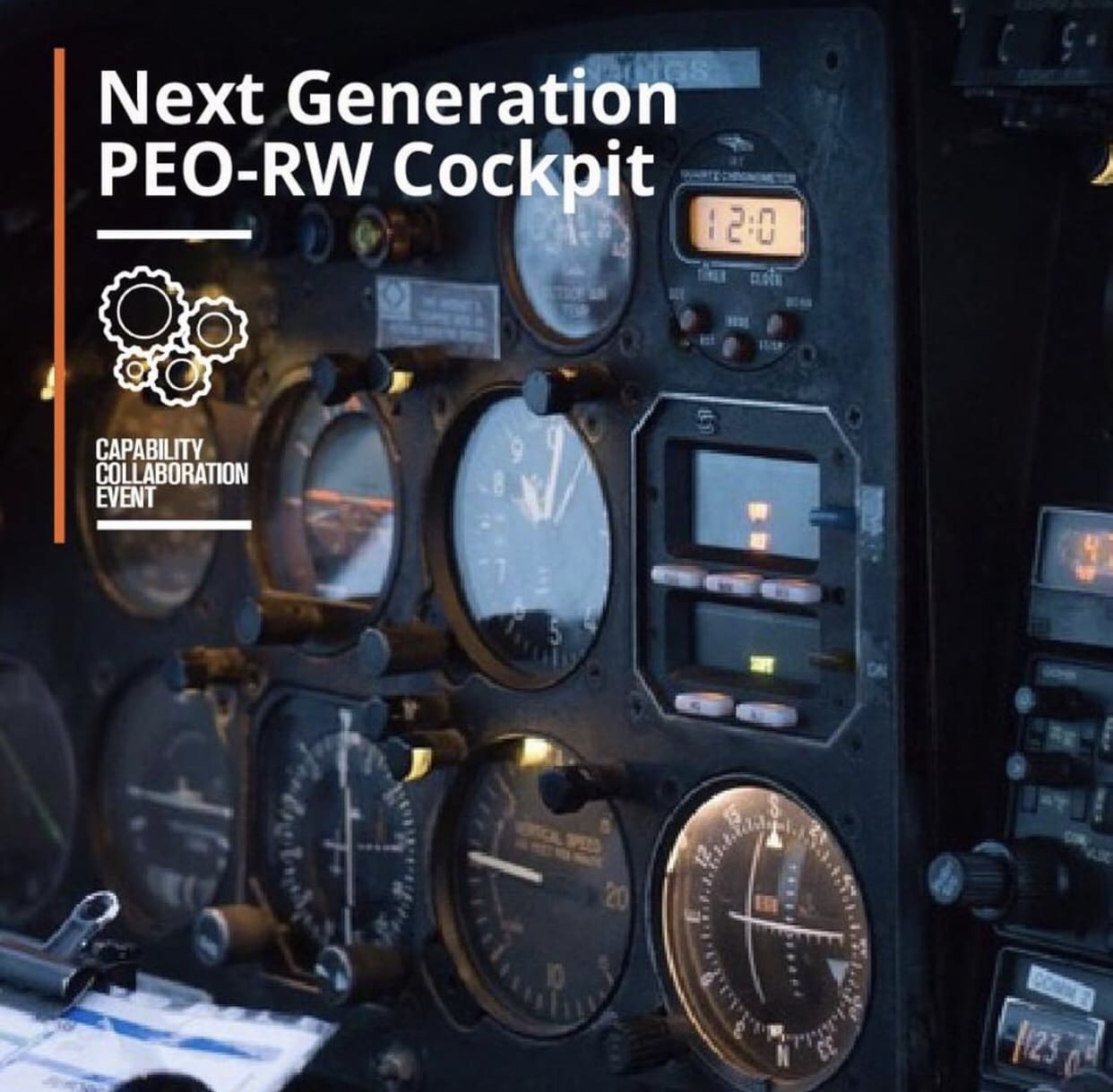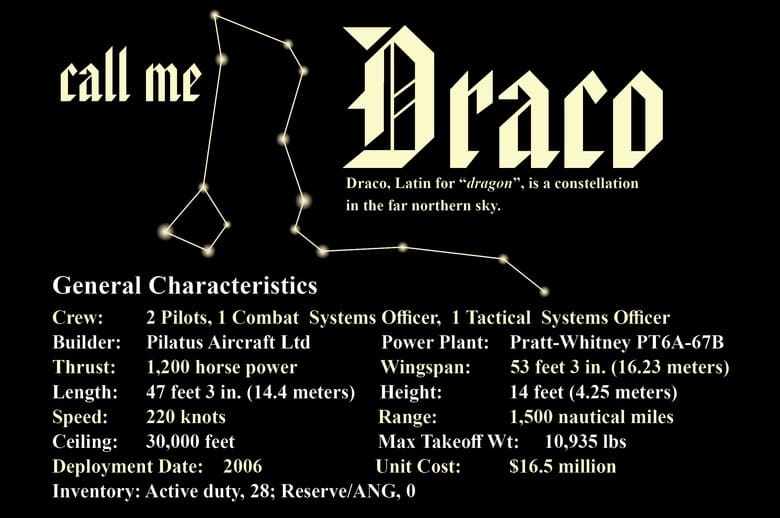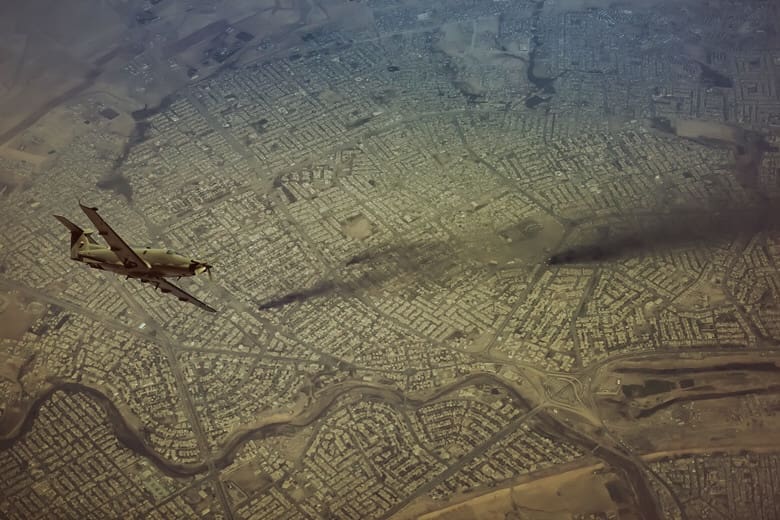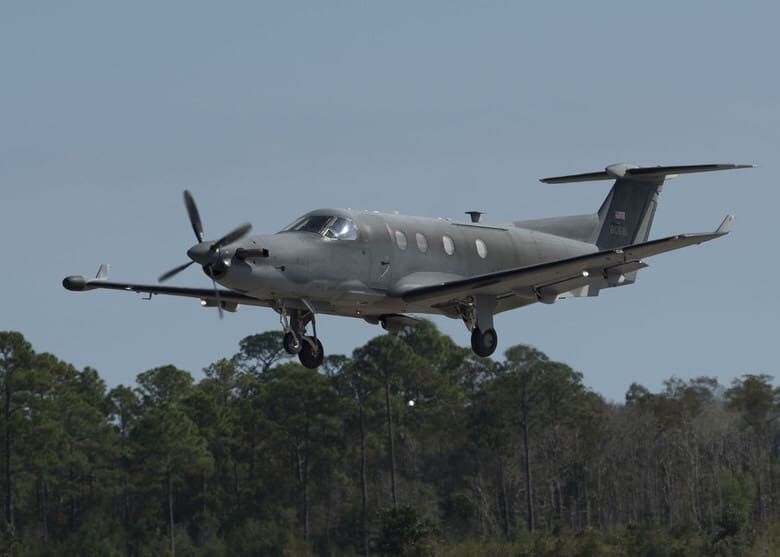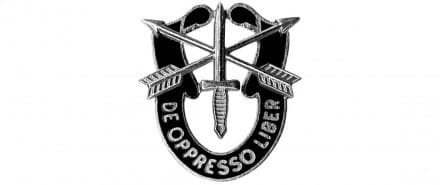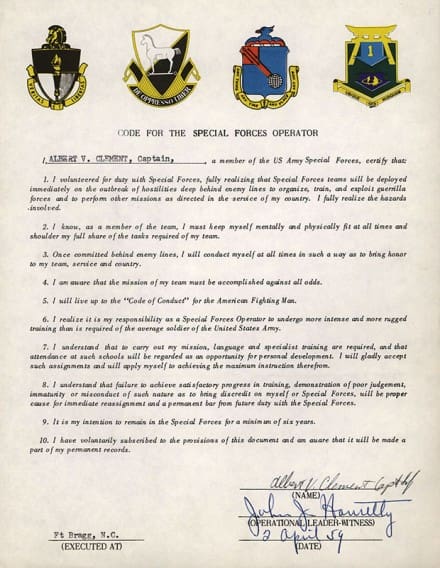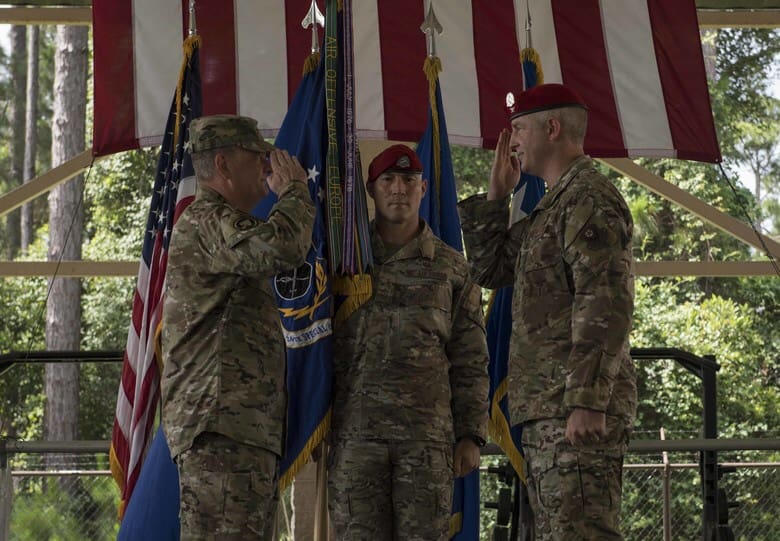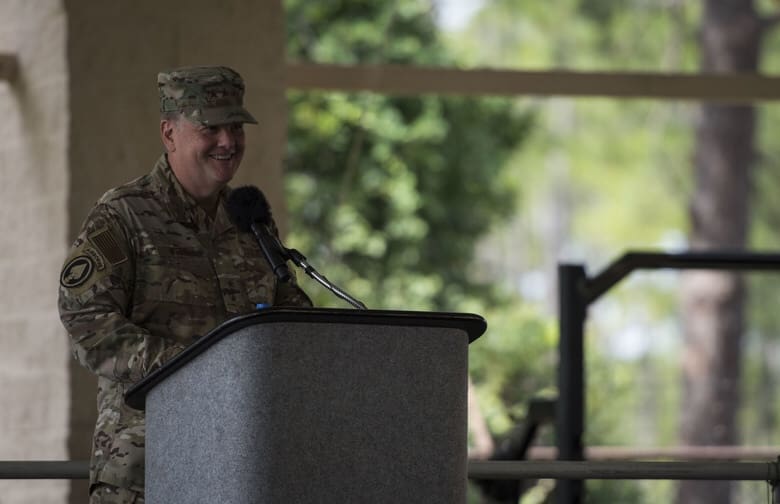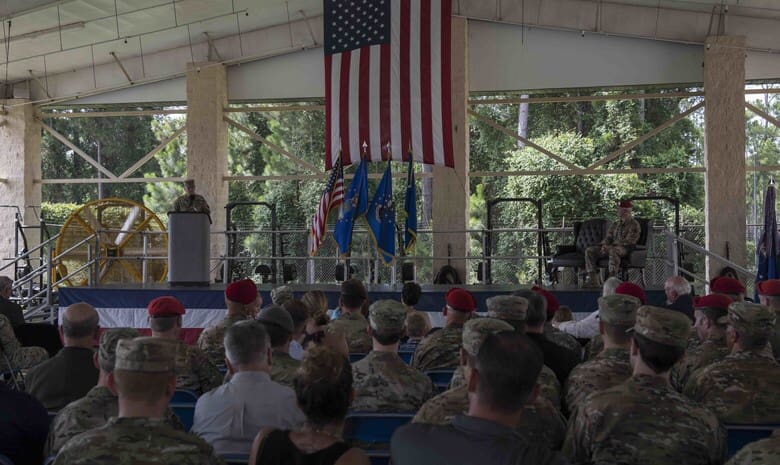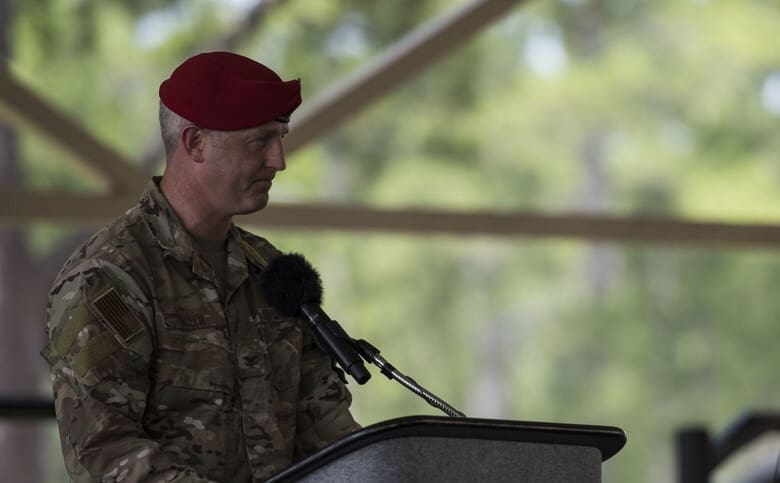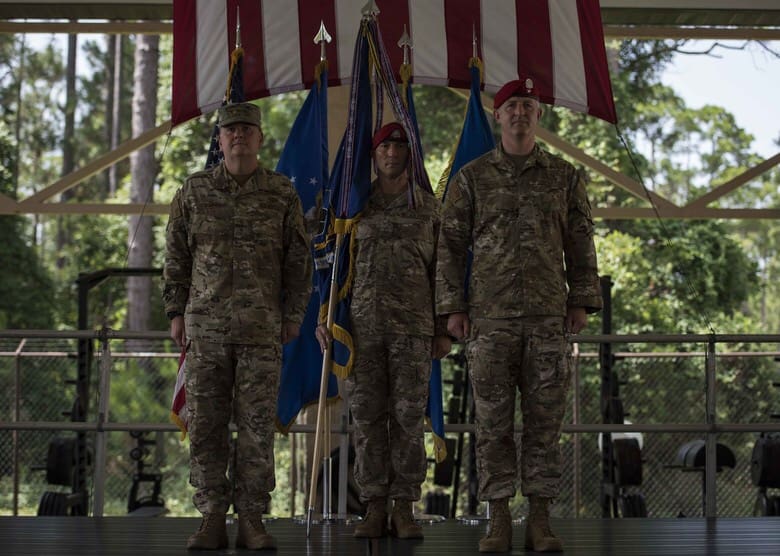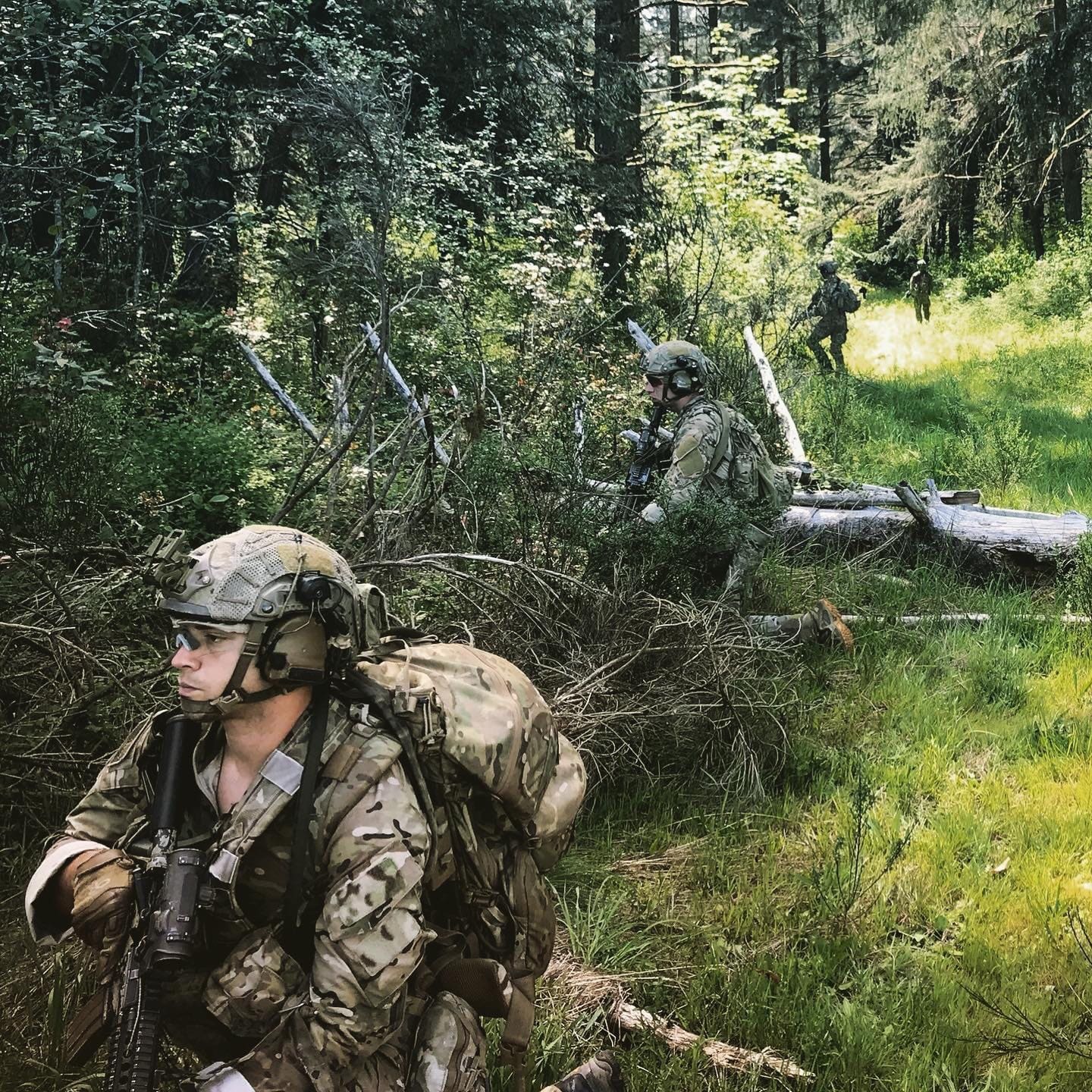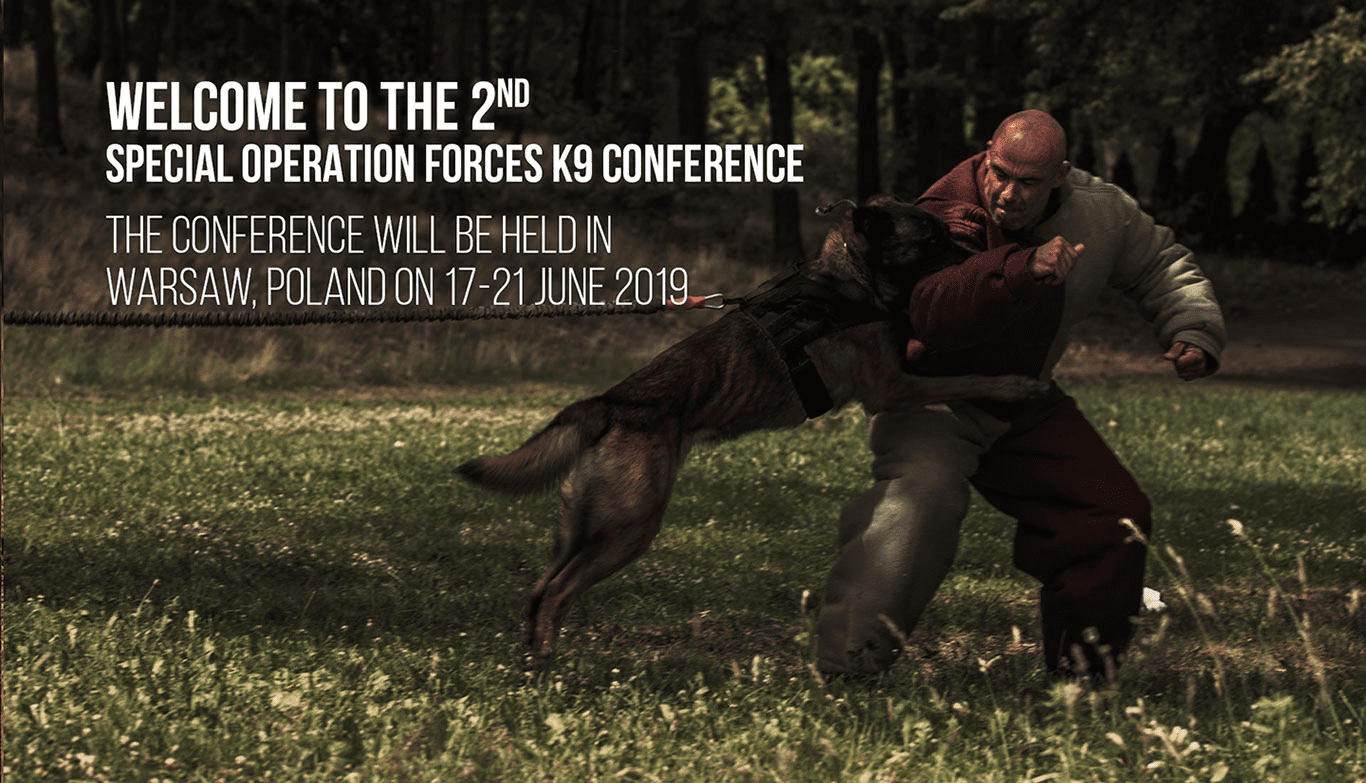HURLBURT FIELD, Fla. – Those who have walked the grounds of Hurlburt Field know that the entire base is engulfed with Air Force history. The street names, buildings, airpark, and training complexes all tell a story and keep memories alive of perhaps a father, husband, son, daughter, or in many cases – a hero.
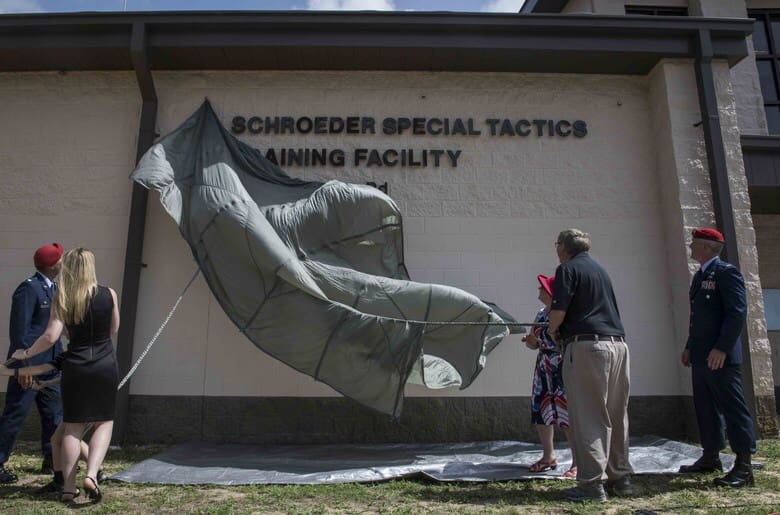
Today, U.S. Air Force Lt. Col William “Bill” Schroeder’s name was bound forever to Special Tactics and Hurlburt Field history when the Special Tactics Training Squadron annex building, which formerly housed the 10th Combat Weather Squadron, was dedicated in his namesake.
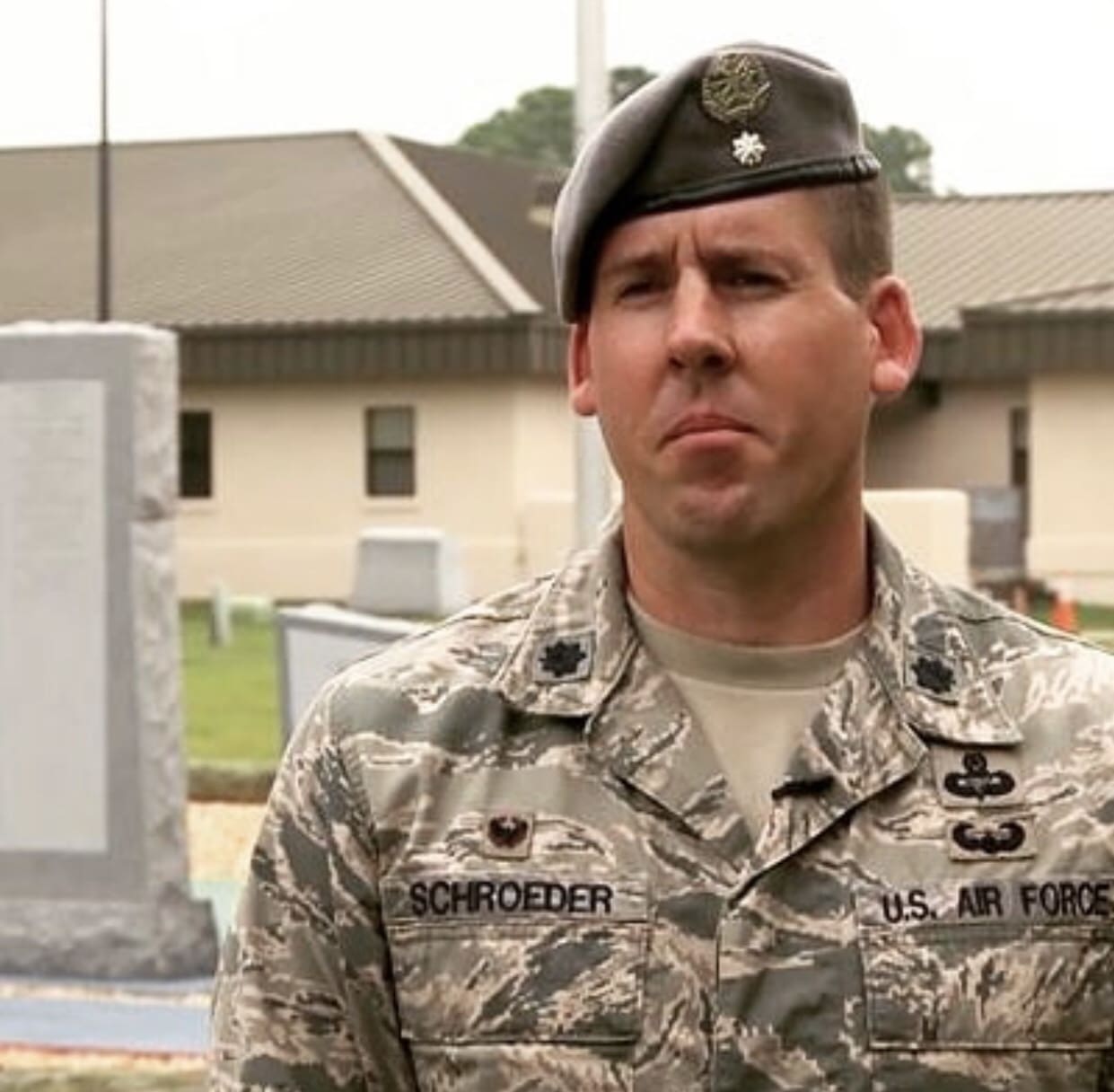
A crowd of family and friends amidst a sea of berets gathered as key leadership within the 24th Special Operations Wing, alongside members of Schroeder’s family, unveiled the new name of the STTS annex building which now reflects “Schroeder Special Tactics Training Facility.”
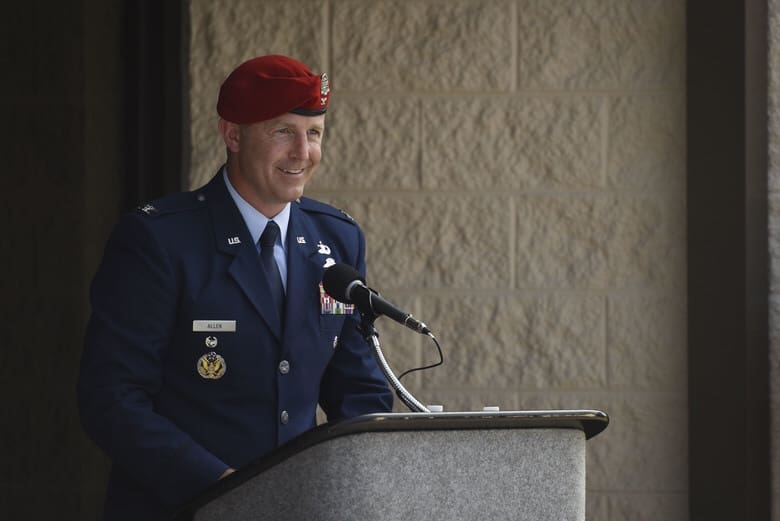
“The STTS forges and refines the next generation of America’s Special Operations Warriors,” said U.S. Air Force Col. Matt Allen, presiding officer of the ceremony and incoming commander of the 24th SOW. “The men and women who walk these halls are preparing to take their place in the front lines of the most powerful Air Force and Special Operations Command in our nation’s history.”
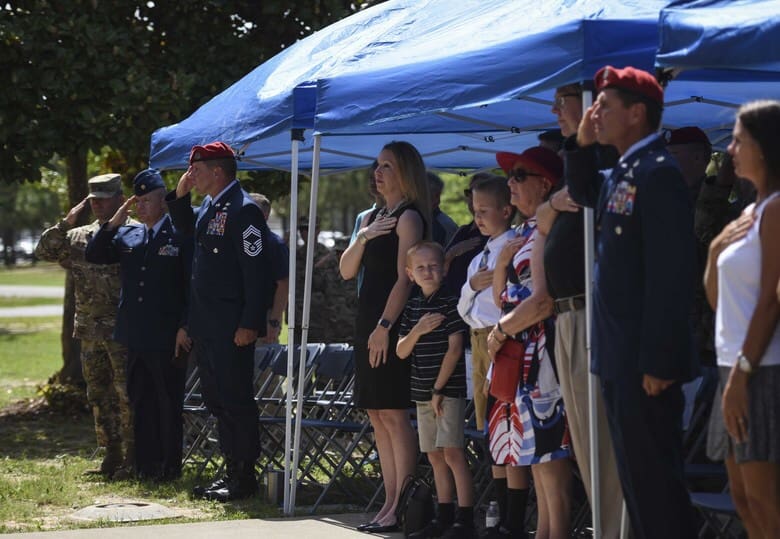
Schroeder’s name, now prominently displayed on the front-side of the building, next to the doors of the entryway, will stand as a reminder to future generations of Special Tactics Airmen of Schroeder’s gallant devotion to country and duty.
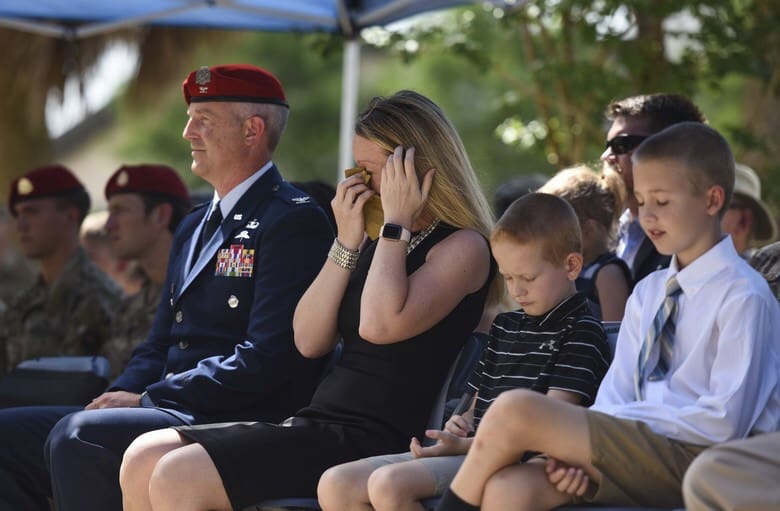
As a career Special Operations Weather Officer, Schroeder commanded the 10th CWS from June 2013 to May 2014, when it was inactivated.
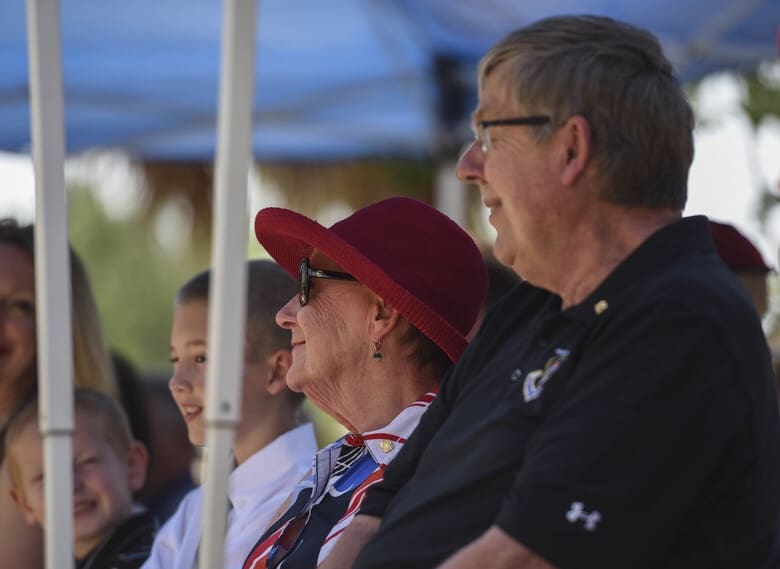
Susan Schroeder, mother of Bill, described Bill as being dedicated to the Air Force since he was only 12 years old, but Bill’s family has fond memories of his time served as the commander of Thor’s Legion, taking care of Airmen.
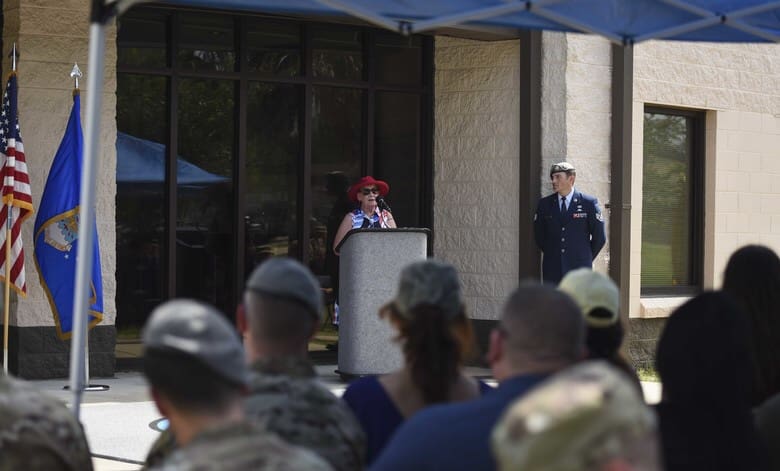
“And in this building, in particular, when he took us through it when we first came to visit, he was so proud of everything that was in there,” said Susan.
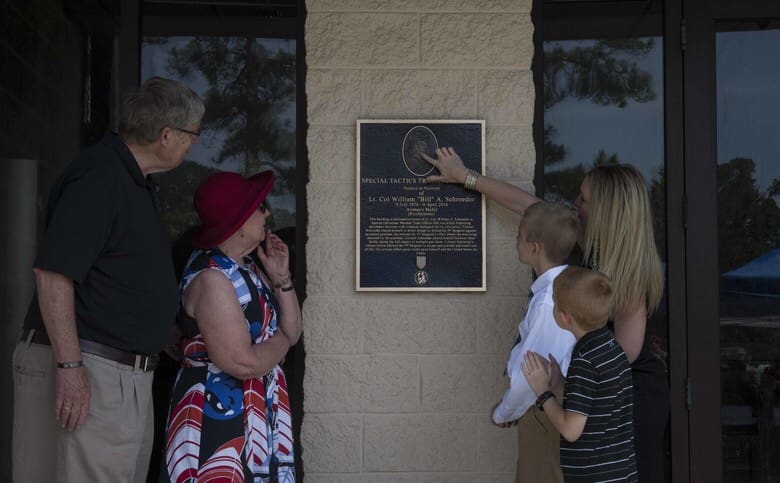
When the squadron inactivated, special operations weathermen integrated into the 720th Special Tactics Group, adding special reconnaissance capabilities to Special Tactics teams.
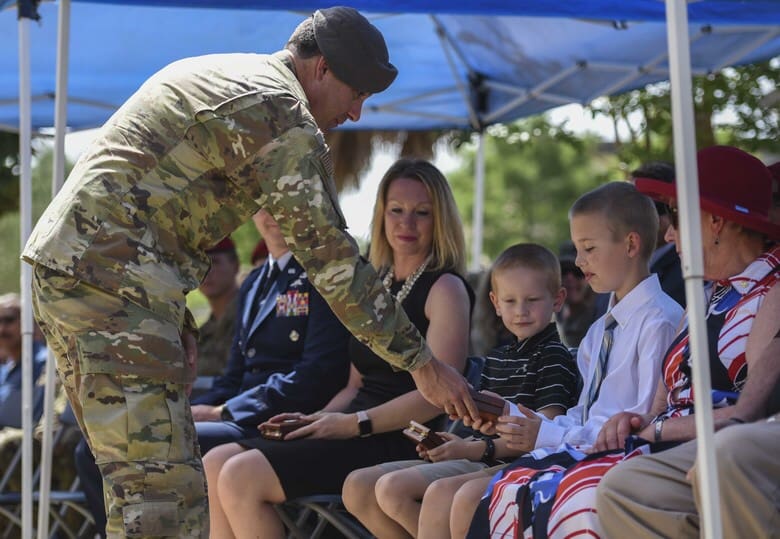
Following the 10th CWS, Schroeder commanded the 342nd Training Squadron, Lackland Air Force Base, Texas, until April 2016 when he was fatally wounded.
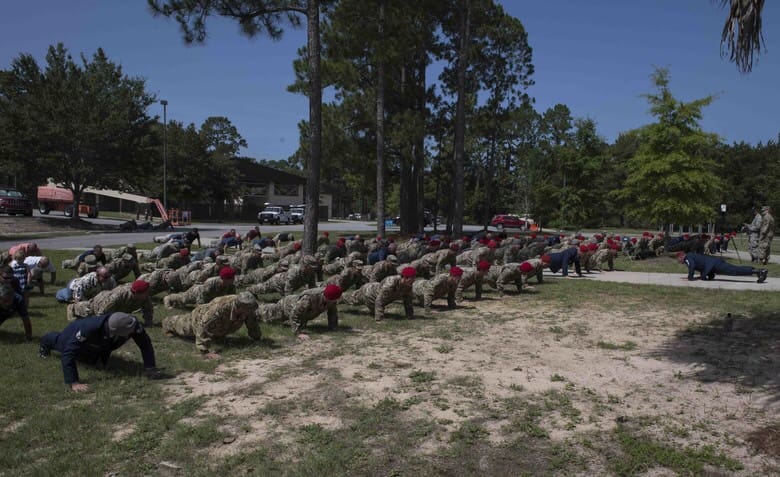
Schroeder, with complete disregard for his own safety, placed himself in direct danger to defend his first sergeant against an armed assailant. Schroeder’s gallant actions allowed the first sergeant to escape and to notify security forces, preventing additional loss of life.
Schroeder was posthumously awarded the Airman’s Medal, which is given to those who distinguish themselves by heroic acts outside of combat.
“Bill gave his life defending his teammates in San Antonio on 8 April 2016, but he lived every day of his life reminding us of the importance of service to others, love of country, and love of his fellow man,” said Allen. “And it’s in this legacy that the ST community proudly dedicates this building to Bill.”
Alongside the building dedication, Schroeder is also memorialized through a recent career change within Special Tactics.
On April 1, the Special Operations Weather Team career field transitioned into Special Reconnaissance, or SR, shifting their primary focus to reconnaissance capabilities brought to a Special Tactics team. “SR” is the operator-initials of Schroeder, an intentional renaming to memorialize a former leader.
Special Reconnaissance Airmen have been an integral piece of Special Tactics with unique training to conduct multi-domain reconnaissance and surveillance across the spectrum of conflict and crisis. As SR, they will continue to maintain their application of lethal and non-lethal air-to-ground integration of airpower.
Susan spoke about what the building dedication means to their family.
“We want you all to know how much gratitude we feel towards all of you who are recognizing our son, our husband, our father, at this very time, with this very, very unique dedication,” said Susan.
24th Special Operations Wing Public Affairs
